Superfund Research Program
By Adeline Lopez
On the 25th anniversary of the death of Karen Wetterhahn, Ph.D., the NIEHS Superfund Research Program (SRP) reflects on her continued legacy in scientific excellence and mentorship. She died June 8, 1997, age 48, following dimethylmercury poisoning from a laboratory accident.
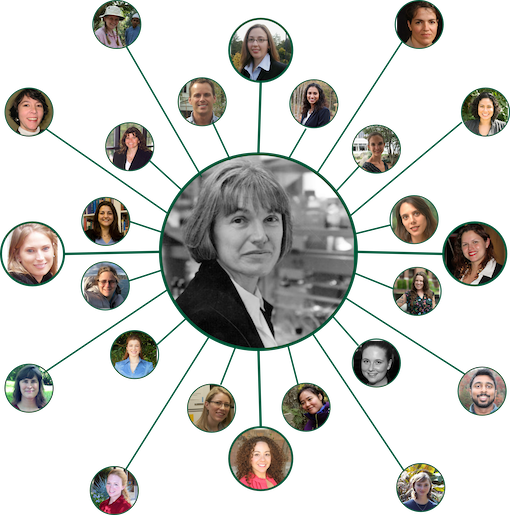
Wetterhahn devoted her career to understanding how certain metals initiate cancer and other human diseases at the molecular level. She also fostered interdisciplinary links between biology, chemistry, environmental studies, engineering, and medicine.
As a tribute to this legacy, in 1998, SRP created the annual Karen Wetterhahn Memorial Award to recognize and support outstanding early career scientists.
Karen Wetterhahn: A Lasting Legacy
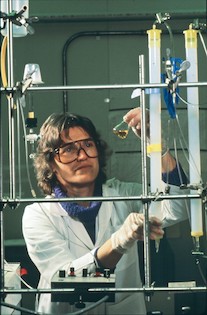
As a professor of chemistry at Dartmouth College, Wetterhahn was the first woman hired into a tenure-track position in her department. She was also the Albert Bradely Third Century Professor in the Sciences and dean of the faculty of arts and sciences.
An established authority on the effects of heavy metals on cellular processes, Wetterhahn discovered important insight into the biological mechanisms of chromium toxicity and carcinogenicity. In 1995, she received funding from NIEHS to build upon this work and establish and direct the Dartmouth Toxic Metals SRP Center, which continued for over 25 years.
NIEHS SRP Director William Suk, Ph.D., remembers Wetterhahn fondly as a friend and scientific leader.
“Karen was one of the best in the field of metal toxicology; but she was unsurpassed when dealing with chromium,” said Suk.
Wetterhahn was drawn to SRP as a model for bringing together people from different fields and institutions to address complex environmental health questions.
”The life sciences are interdisciplinary," Wetterhahn insisted.
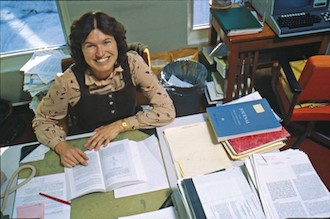
“[Karen] was absolutely a pioneer in big-team, interdisciplinary, problem-based science,” said colleague Carol Folt, Ph.D., now president of the University of Southern California, in an interview with Chemical and Engineering News. Folt added that Wetterhahn also understood the need to address public policy and community education in research programs.
Wetterhahn Award
To date, the annual Wetterhahn award has recognized 24 outstanding SRP trainees. This story highlights a few past winners who have pursued careers in different disciplines and sectors. To learn more about these and other award winners, please visit the Karen Wetterhahn Memorial Award page.
Elena Craft, Ph.D. (2002): Leveraging Partnerships for Climate Resilience
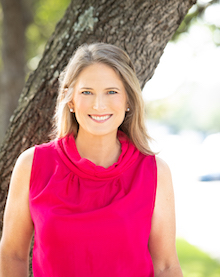
“Working on the ground with communities has enabled a profound perspective that is reflective of the incredible importance of our collective efforts to address the impacts of extreme weather and promote resilience,” Craft noted. (Photo courtesy of Elena Craft)
Elena Craft, Ph.D., a former trainee with the Duke University SRP Center, received the Wetterhahn Award in 2002 for her research characterizing how metals affect important signaling molecules within cells, including those involved in converting genetic information from DNA into RNA.
Craft said that she felt a sense of responsibility in upholding Wetterhahn’s trailblazing approach as well as the high standard of work for which she was known.
Today, Craft is Associate Vice President of Climate and Health at the Environmental Defense Fund where she built and leads a program to address the effects of extreme weather on communities. She was featured in a Women Making History video where she explained her approach to promoting healthy communities.
Multidisciplinary Partnerships: According to Craft, SRP’s multidisciplinary framework laid the foundation for extensive and long-lasting partnerships that continue through her current work.
“From very early in my graduate studies, SRP played a key role in advancing my career,” she reflected. “I was able to access the brain trust of high-profile researchers and top scientists in the field. The network that I developed since winning the award has continued to be my most valuable professional asset.”
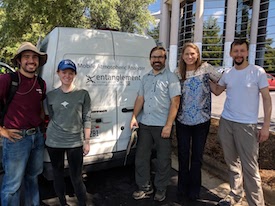
Collaborators head out to collect samples after Hurricane Florence. From left, Texas A&M University SRP Center trainee Gaston Casillas, Duke SRP Center student Anna Lewis, Entanglement Technologies CEO Tony Miller, Ph.D., Craft, and Gunnar Skulason from Entanglement Technologies. (Photo courtesy of Tony Miller)
Scientific Excellence: Leveraging her extensive network of collaborators, many originating within the SRP and NIEHS, Craft and partners have been able to secure funds and additional monitoring and sampling resources to characterize contaminants in the aftermath of disaster events like Hurricanes Harvey and Florence. Importantly, the team established the first registry to assess health and housing impacts following a disaster and created a tool to integrate data on social vulnerability, baseline health, environmental exposures and risks, pollution sources, and flooding to help inform community actions.
“One key benefit of working within the SRP family is the number of on-the-ground collaborations,” Craft noted. “Specifically, the community engagement core provides an inextricable link between bench science and improving lives.”
Mentorship: Inspired by Wetterhahn’s legacy and her own mentors, Craft takes every opportunity to help students who are interested in the sciences to succeed.
Anne M. Spuches, Ph.D. (2004): A Positive Role Model at the Bench
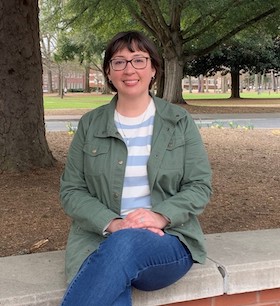
“My superpower is my compassion and my ability to connect with students. I strive to encourage students to consider careers in STEM.” (Photo courtesy of Anne Spuches)
In 2004, Dartmouth SRP Center post-doctoral trainee Anne Spuches, Ph.D., received the Wetterhahn Award for her research to better understand how toxic metals interrupt cellular processes.
“The Wetterhahn Award opened doors for me and helped pave the way in my career in academia,” Spuches reflected. “It gave me a platform to discuss my research and supplied me with strong advocates who have supported me throughout my career. I am truly honored to be in this group of awe-inspiring women.”
Today, Spuches is an Associate Professor of Bioinorganic Chemistry at East Carolina University.
Scientific Excellence: Building on her work on arsenic at Dartmouth, Spuches explores how toxic metals, like cadmium and lead, mimic essential metals, like calcium and iron, in the body by interacting with proteins and disrupting how cells normally function. Her lab uses advanced thermodynamic and spectroscopic techniques to characterize how metals bind to biological molecules and interact with or affect cells. Recently, her team has been probing the unexpected similarities in how calcium and cadmium bind to proteins.
“It has been incredibly fun for my students and I to investigate these interactions and how cadmium can disrupt subsequent protein interactions,” she said.
Multidisciplinary Partnerships: According to Spuches, the multidisciplinary SRP model is essential to answering difficult research questions.
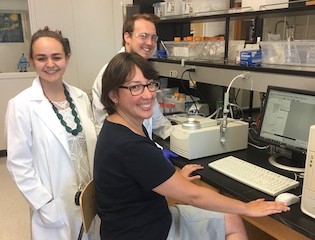
“My experience with the Dartmouth SRP Center changed my outlook on science and academia,” she recalled. “Our team included scientists from many disciplines working together to solve a common problem. That is how science should be.”
Mentorship: A respected mentor and teacher, Spuches has been recognized with many accolades, including the Honored Instructor Award and being named the Thomas Harriot College of Arts and Sciences Distinguished Professor in the Natural Sciences and Mathematics.
“I am committed to helping my students develop all the skills needed to be successful researchers — both technical and emotional,” she said. “Research can be exhilarating but it can also be frustrating. I want to provide my students with the tools to overcome obstacles and to problem solve effectively.”
Mónica Ramírez-Andreotta, Ph.D. (2011): Engaging Communities to Promote Health
In 2011, Mónica Ramírez-Andreotta, Ph.D., of the University of Arizona, received the Wetterhahn Award for her commitment to engaging the residents of a local Arizona community in her research and empowering them with results.
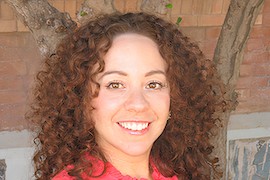
According to Ramírez-Andreotta, doing what is right and being ethical in research is critical to empowering communities. (Photo Courtesy of the University of Arizona SRP Center)
“My work blends environmental monitoring and pollution science, exposure science, art, science and risk communication, and education to address environmental health challenges,” she said. “The Wetterhahn Award helped legitimize my work and approach to cross-pollinating as an environmental health scientist and cultural knowledge broker.”
Ramírez-Andreotta is currently an Associate Professor at the University of Arizona and leads research translation activities at the SRP Center.
Multidisciplinary Partnerships: Ramírez-Andreotta is dedicated to incorporating multiple forms of knowledge and expertise from affected communities to identify actionable solutions. For example, in response to community concerns, she launched a citizen science project with residents of Dewey-Humboldt, Arizona, to understand environmental quality in residential and community gardens. This successful program, called Gardenroots, grew into a nation-wide initiative.
“Our goal as researchers is not just to improve our understanding of environmental health. We need to make sure we answer the tough questions, and conduct investigations that connect to the social, cultural, economic, and policy realms so that science can lead to actionable strategies to improve people’s well-being,” Ramírez-Andreotta said in an NIEHS Story of Success.
Scientific Excellence: “Our lab uses participatory research methods to investigate exposure pathways and communication strategies,” she said in an NIEHS Keystone Science Lecture. “We aim to translate environmental health sciences research into action that achieves structural change.”
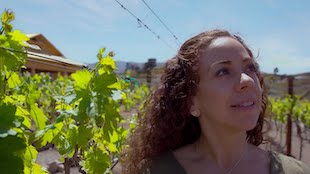
Through Gardenroots, Ramírez-Andreotta and her team demonstrated that peppermint plants can be used by communities to monitor metals in air. They also developed a methodology to integrate community data with federal and state datasets, laying the groundwork for more widespread use of community data in research and decision making.
Angela Gutierrez, Ph.D. (2017): Developing Sustainable Technologies to Clean up Water
Angela Gutierrez, Ph.D., of the University of Kentucky, received the Wetterhahn Award in 2017 for her innovative work to develop magnetic nanoparticles to capture and remove polychlorinated biphenyls (PCBs) from water and for her involvement in scientific communication and outreach.
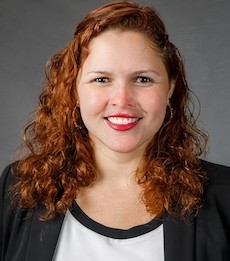
Today, Gutierrez is a postdoctoral researcher at the University of Kentucky, Senior Scientist at Bluegrass Advanced Materials, LLC, and serves as the Research Experience & Training Coordination Core liaison and facilitates research translation activities at the UK SRP Center.
Scientific Excellence: Gutierrez develops sustainable strategies to clean up water contaminated with organic contaminants, such as PCBs and per- and polyfluoroalkyl substances (PFAS). As a spin-off of this work, she co-led an NIEHS SRP-funded small business project with Bluegrass Advanced Materials. The team developed smart temperature-responsive flocculants to remove PFAS from water.
Multidisciplinary Partnerships: Gutierrez noted that working in a collaborative environment with other experts and stakeholders is extremely important to translating research into effective solutions.
“Team science allows you to start thinking not just about your interest as a researcher, but about the needs of affected community members and other stakeholders to develop innovative solutions that address their problems,” she said. “For example, here in Kentucky several water utility systems have PFAS levels above the current advisory standards — I am interested in accelerating the transition of knowledge and technologies from the bench to the field to address public health needs."
Mentorship: As the liaison for the UK SRP Center, Gutierrez is involved in planning diverse career and research translation development activities for graduate students, such as courses and conferences.
“Working with trainees and seeing them get excited about research as they become independent investigators is extremely fulfilling,” she noted. “I see mentoring as a way to share my love for science with others and, hopefully, spark that same passion in their own lives.”


